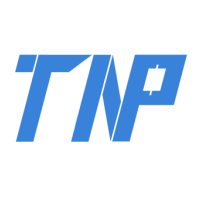ConsenSys has announced the launch of its layer-2 network Linea, as the Ethereum ecosystem welcomed yet another scaling solution.
Linea incorporates zero-knowledge cryptography and has produced considerable scaling milestones during testing, achieving faster throughput and significantly lower transaction costs compared to the main Ethereum network.
A New Scaling Solution
Linea is ConsenSys’s new layer-2 scaling solution that enables developers to build or migrate decentralized applications (dApps) for Ethereum. The layer-2 network utilizes zero-knowledge proofs and is EVM-compliant, meaning applications on the network can seamlessly interact with the Ethereum blockchain. Zero-knowledge (zk) cryptography helps facilitate greater scalability and improved transaction speeds, thus helping address network congestion and high gas fees on Ethereum. The rollup network implemented by Linea is commonly known as zkEVM, thanks to its compliance with the Ethereum Virtual Machine (EVM).
A Highly Successful Testing Phase
The Linea zkEVM has been launched after a lengthy and highly successful testing phase after it was revealed that the ConsenSys team had been working on the rollup for the past four years. The testing phase began when ConsenSys released a public testnet on the 28th of March, enabling the stress-testing of the new layer-2 technology. The testnet phase saw around 5.5 million unique wallets conduct 46 million transactions. ConsenSys noted several improvements when it came to Linea’s performance, transaction costs, and user experience throughout its testing phase.
ConsenSys has claimed that the fees on the network will be 15 times lower than those prevailing on the Ethereum main network. The alpha phase began on the 11th of July, with over 100 partners involved. Joseph Lubin, the founder and CEO of ConsenSys, talked about the number of layer-2 Ethereum scaling solutions and protocols and highlighted their importance when it came to driving the development of Web3 functionality and applications.
“With the Merge to Proof of Stake and the broad traction of the rollup-centric roadmap, Ethereum L2s are set to play a crucial role in making great advances in scalability and usability.”
The announcement also highlights several decentralized finance (DeFi) applications migrating to Linea to take advantage of its fast finality, security from the Ethereum mainnet, and capital-efficient bridge. The network also offers users low gas fees, high throughput, and low latency, all of which are critical to power blockchain gaming, non-fungible tokens, and social applications. App developers can deploy their projects and applications on Linea’s “Alpha” network as early as Friday. However, general users will have to wait until next week to access the network.
The launch of the Alpha mainnet will use several safeguards to protect decentralized applications, users, and the network itself. Measures include allowing only launch partners to execute calls over the network for the first week. ConsenSys plans to further open up the network during ETHCC, which is scheduled to take place in France from the 17th of July. It also plans to hold a bug bounty and monitor performance before opening up the network to end users.
ConsenSys also announced the launch of its Linea Ecosystem Investment Alliance (EIA). The alliance will see over 30 venture capitalist firms give advisory assistance and lend capital to ecosystem builders. Ethereum layer-2 solutions have become a major talking point in 2023, with Polygon also taking its zkEVM network public in March. Starknet has also highlighted plans to increase the throughput on its network this year. Starknet founder Eli Ben-Sasson is the pioneer behind zk-proofs.
Key Features
Linea has seen the introduction of several features and upgrades with its alpha mainnet phase. These include a dynamic fee mechanism and a new outer-proof system. The alpha mainnet phase also introduces a feature called “batch conflation.” This feature optimizes the number of layer-2 transactions and blocks that can fit into a layer-1 batch. This allows it to reduce fixed costs typically associated with layer-1 and help provide a cost-effective transaction experience. These upgrades will help Linea offer transaction costs that are far lower than Ethereum’s main layer.
Additionally, MetaMask will also offer support for Linea soon, allowing users to access the network through the MetaMask Portfolio and Bridge, Swap, and Buy features. The MetaMask integration can be expected in the next few weeks and allow wallet users to interact with decentralized applications and protocols based on Linea.
Disclaimer: This article is provided for informational purposes only. It is not offered or intended to be used as legal, tax, investment, financial, or other advice.
Source:https://cryptodaily.co.uk/2023/07/consensys-announces-launch-of-linea-zkevm-on-ethereum

 TnP Founder
TnP Founder 小息魔
小息魔 比利强
比利强 论坛
论坛 香港上市公司列表
香港上市公司列表 香港指明股份合计淡仓(含变动助预测市场动向)
香港指明股份合计淡仓(含变动助预测市场动向) 恒生綜合行业指数强弱对比图
恒生綜合行业指数强弱对比图 大行+业內建议(报道)
大行+业內建议(报道) 美国主要资产分类强弱对比图
美国主要资产分类强弱对比图 桥水基金公布仓位 Bridgewater Associates, LP
桥水基金公布仓位 Bridgewater Associates, LP 方舟创新ETF ARK 持仓
方舟创新ETF ARK 持仓 滬港通及深港通每日数据
滬港通及深港通每日数据



